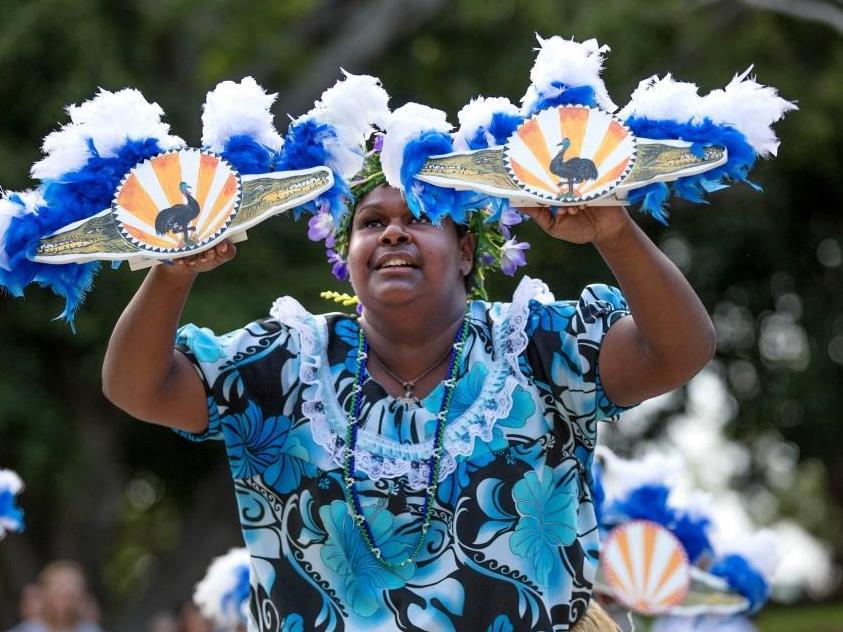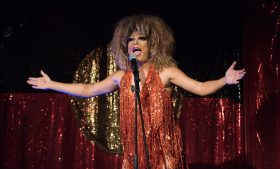Tania-Rose Gibuma, Malu Kiai Mura Buai Torres Strait Traditional Dance Company, at Australian Performing Arts Market 2018. Image: Rob Maccoll
For more than a decade there’s been a call for the establishment of a proposed national peak for First Nations arts and cultures. As the interim secretariat, The Australia Council for the Arts is assisting the consultations.
For the last six months, consultations have been held across the country, with independent practitioners, cultural groups and representatives from cultural organisations contributing their views on how a National Indigenous Arts and Cultural Authority (NIACA) could best be established.
‘Some of the key themes that are emerging from the consultation forums are in response to questions that we put to the sector and industry in relation to why a NIACA would be desired, the activities it could do, its legal structure and some of the revenue considerations in relation to it,’ said Lydia Miller, Australia Council Executive Director, Aboriginal and Torres Strait Islander Arts, who has been assisting with the consultations.
Participants have contributed to the forums by talking about issues including governance of such a peak body, how it would be structured, and the way it could best represent a national community with such diversity and complexity.
‘We find that people are really focused on elements of not just artistic practice and expression but also cultural practices, how people can be recognised for the connection of their culture to matters of heritage and country and the responsibilities that emerge from that,’ Miller told Artshub.
‘There’s been discussion around how a body could uphold, protect, maintain and empower the national community through supporting activities, like operating a one-stop-shop to advise artists about how to navigate their pathway through to an industry or being able to connect them with other industry bodies in relation to protecting and upholding the rights to their intellectual and cultural material.’
The breadth of responses have been extremely diverse, taking into consideration a range of voices across the sector. Included are cultural organisations stemming from language centres, heritage spaces, collectives and museums, alongside independent practitioners including musicians, theatre makers and dancers. But it’s the voices of those outside the sector that are equally as important.
‘I think it’s been a very considered deep exploration,’ Miller said. ‘A really interesting element is also from those who are not First Nations peoples and how they see the value proposition of a NIACA and the premise for a body that upholds First Nations arts and culture and what that means in terms of not only advocacy and champion, but also the possibility of strategic networks and partnerships so that people can work cooperatively in relation to the wider Australian arts and culture scene as well.’
National Summit and beyond
Consultations into the formation of a NIACA will continue throughout the sector this year across an additional 24 communities with input from regional governance bodies. At the end of 2019 a national summit will be held, which will provide an opportunity to elect a steering committee and allow people to engage in much deeper conversation about themes covered in the consultation. Miller said the National Summit will be a key moment in determining what a NIACA could look like.
‘From the general assembly at the national summit we could see the election of a steering committee. A steering committee would be chartered with responsibility to incorporate whatever the entity is and then of course to have its first annual general meeting, which would be the formalisation of the actual body and the establishment of a NIACA.’
To learn more about the National Indigenous Arts & Cultural Authority, visit: niaca.com.au





